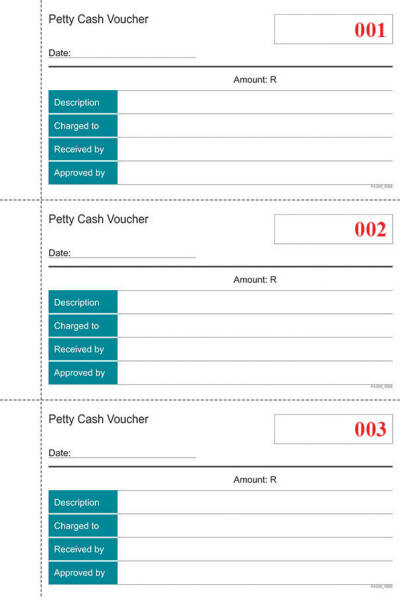
You may have seen different financial statements such as the Balance, Income, and Statements of change in equity. Each one of these financial statements contains useful information, but they do not all have the same value. They differ in how they are used. Let's discuss the different types and how they are used in order to better understand your business. All three provide valuable information that will help you make better decisions.
Income statement
One of the most important types of financial statements is an income (or balance sheet). It tracks the movement of funds into and from the company. Another type, called the consolidated financial statement, lists the company's assets, liabilities and stockholders’ equity. This represents the book value for shareholders' shares of stock. These three financial statements allow investors and creditors to better understand the company's performance, and help them predict its future.
In addition to income, expenses are also included in income statements. These are the costs involved in providing goods and services. The cost to sell goods (COGS) is the cost of materials or labor. Although they are not directly related to production, general administrative costs are essential to the organization. In the income statement are also listed depreciation and amortization as well as any other costs that relate to assets. Also called net income, or net profit, the total of these costs, and is what the company realizes in profits or losses.
Balance sheet
The balance sheet is a basic financial statement for a company. The balance sheet gives investors an overview of the company's assets as well as its liabilities. An asset is the amount of cash that is available. Other liquid assets than cash include inventory and accounts receivable. You may not see other types of assets on your balance sheet such as intangibles such as equipment and inventory.
The balance sheet is the most basic of all financial statements, and the first to be reviewed. This document lists the organization's assets as well as its liabilities. Assets are listed according to the expected turnover. The first listing is for liabilities, while the current assets are next. Next, fixed assets such as buildings are listed. A portion of these assets is deducted from the total amount of current assets, which is then divided by two: current and long-term. When analysing the company's assets, liabilities and other financial information, it is important that you understand the differences.
Statement of equity changes

The Statement of Change in Equity in financial statements is a section that reconciles opening and closing balances. This statement also explains how the income statement and balance sheets relate. It covers all transactions not included in the income statement. This includes any withdrawals of equity, changes in accounting policies, or corrections made during the previous period. You will need to follow the following steps in order to prepare the Statement of Change in Equity. Make sure that all balances remain consistent and correct.
The statement of equity change shows how equity has changed over the past period. The statement of change in equity also displays changes that could have been caused by various factors such as new monetary investments, bonus payments, holder withdrawals and revisions to fixed assets. The Statement of Change in Equity is intended to show the connections between the income statement and balance sheet, which can help investors and stockholders make informed decisions.
Notes to financial statements
The financial statements do not include the notes. The notes include additional information beyond what is included in financial statements. They include details such as revenue, payment terms or warranties. The notes are prepared on a "going concern basis", which assumes that the company will continue operating and can meet its liabilities. The notes may include additional information, such as details about the company's risks. You may also find information about possible future vulnerabilities in the notes.

The information in the notes to financial statements are critical for assessing the financial position of the company. Intangible assets refer to those that don't have a physical form such as trademarks or patents. The notes describe how the financial statement were consolidated. This consolidation is performed to verify the financial statements from all subsidiaries in a company. Footnotes provide details on how consolidation was achieved. This gives a better understanding of the company's financial performance.
FAQ
What does it entail to reconcile accounts?
Reconciliation involves comparing two sets of numbers. The "source" set is known as the "reconciliation," while the other is the "reconciled".
The source includes actual figures. The reconciled shows the figure that should be used.
If you are owed $100 by someone, but receive $50 in return, you can reconcile it by subtracting $50 off $100.
This ensures that the accounting system is error-free.
Accounting: Why is it useful for small-business owners?
Accounting isn't just for big companies. Accounting is beneficial to small business owners as it helps them keep track and manage all the money they spend.
If you own a small business, then you probably already know how much money you have coming in each month. But what happens if you don’t have a professional accountant to help you with this? You might be wondering about your spending habits. Or, you might neglect to pay your bills in time, which could affect your credit rating.
Accounting software makes it easy for you to keep track and manage your finances. There are many kinds of accounting software. Some are free while others cost hundreds to thousands of dollars.
It doesn't matter which accounting system you use; you need to know its basic functions. By doing this, you will not waste time learning how to operate it.
These are the basics of what you should do:
-
Input transactions into the accounting software.
-
Keep track of income and expenses.
-
Prepare reports.
Once you've mastered these three things, you're ready to start using your new accounting system.
What is the significance of bookkeeping and accounting
Accounting and bookkeeping are essential for every business. They allow you to keep track of all transactions and expenses.
They can also help you avoid spending too much on unnecessary things.
You should know how much profit your sales have brought in. Also, you will need to know how much debt you owe other people.
You might consider raising your prices if you don't have the money to pay for them. Customers might be turned off if prices are raised too high.
You may be able to sell some inventory if you have more than what you need.
If you have less than you need, you could cut back on certain services or products.
All these things will have an impact on your bottom-line.
Statistics
- BooksTime makes sure your numbers are 100% accurate (bookstime.com)
- a little over 40% of accountants have earned a bachelor's degree. (yourfreecareertest.com)
- "Durham Technical Community College reported that the most difficult part of their job was not maintaining financial records, which accounted for 50 percent of their time. (kpmgspark.com)
- Given that over 40% of people in this career field have earned a bachelor's degree, we're listing a bachelor's degree in accounting as step one so you can be competitive in the job market. (yourfreecareertest.com)
- Given that over 40% of people in this career field have earned a bachelor's degree, we're listing a bachelor's degree in accounting as step one so you can be competitive in the job market. (yourfreecareertest.com)
External Links
How To
How to do Accounting for Small Business
Accounting for small businesses should be one of your most important tasks when managing a business. This includes tracking income and expenses, preparing financial statements, and paying taxes. Quickbooks Online and other software programs are required. There are many options for accounting small businesses. You should choose the best way for you according to your needs. Below are the top choices.
-
The paper accounting method is recommended. If you want to keep things simple, then using paper accounting may work well for you. This method is very simple. You simply need to record transactions every day. You might consider investing in an accounting software like QuickBooks Online if you want your records to be accurate and complete.
-
Use online accounting. Online accounting gives you the ability to easily access your accounts whenever and wherever you are. Wave Systems and Freshbooks are three of the most widely used options. These software allows you to manage your finances and generate reports. They are easy to use, have great features, and many benefits. These programs can help you save time and money on accounting.
-
Use cloud accounting. Another option you have is cloud accounting. It allows you secure storage of your data on a remote server. Cloud accounting offers many benefits over traditional accounting systems. Cloud accounting doesn't require expensive hardware and software. You have better security since all your information can be accessed remotely. It eliminates the need to back up your data. Fourth, you can share your files with others.
-
Use bookkeeping software. Bookkeeping software can be used in the same manner as cloud accounting. But, it is necessary to purchase a new computer and install it. After the software has been installed, you can connect to your internet account to access them whenever you like. You can also view your balances and accounts right from your computer.
-
Use spreadsheets. Spreadsheets allow you to enter your financial transactions manually. You can, for example, create a spreadsheet that allows you to enter sales figures each day. You can also make changes whenever you like without needing to update the whole document.
-
Use a cash book. A cashbook records all transactions that you make. Cashbooks come with different sizes and shapes, depending on how many pages you have. Either keep a separate notebook each month, or you can use one notebook that covers multiple months.
-
Use a check register. You can use a check register as a tool to help you organize receipts or payments. Simply scan your items into your scanner to transfer them to the check register. You can then add notes to help remember what you bought later.
-
Use a journal. Journals are a logbook that helps you keep track of your expenses. This is especially useful if you have frequent recurring expenses such rent, utilities, and insurance.
-
Use a diary. A diary is simply something you keep track of and that you can write in your own words. You can use it to keep track of your spending habits and plan your budget.